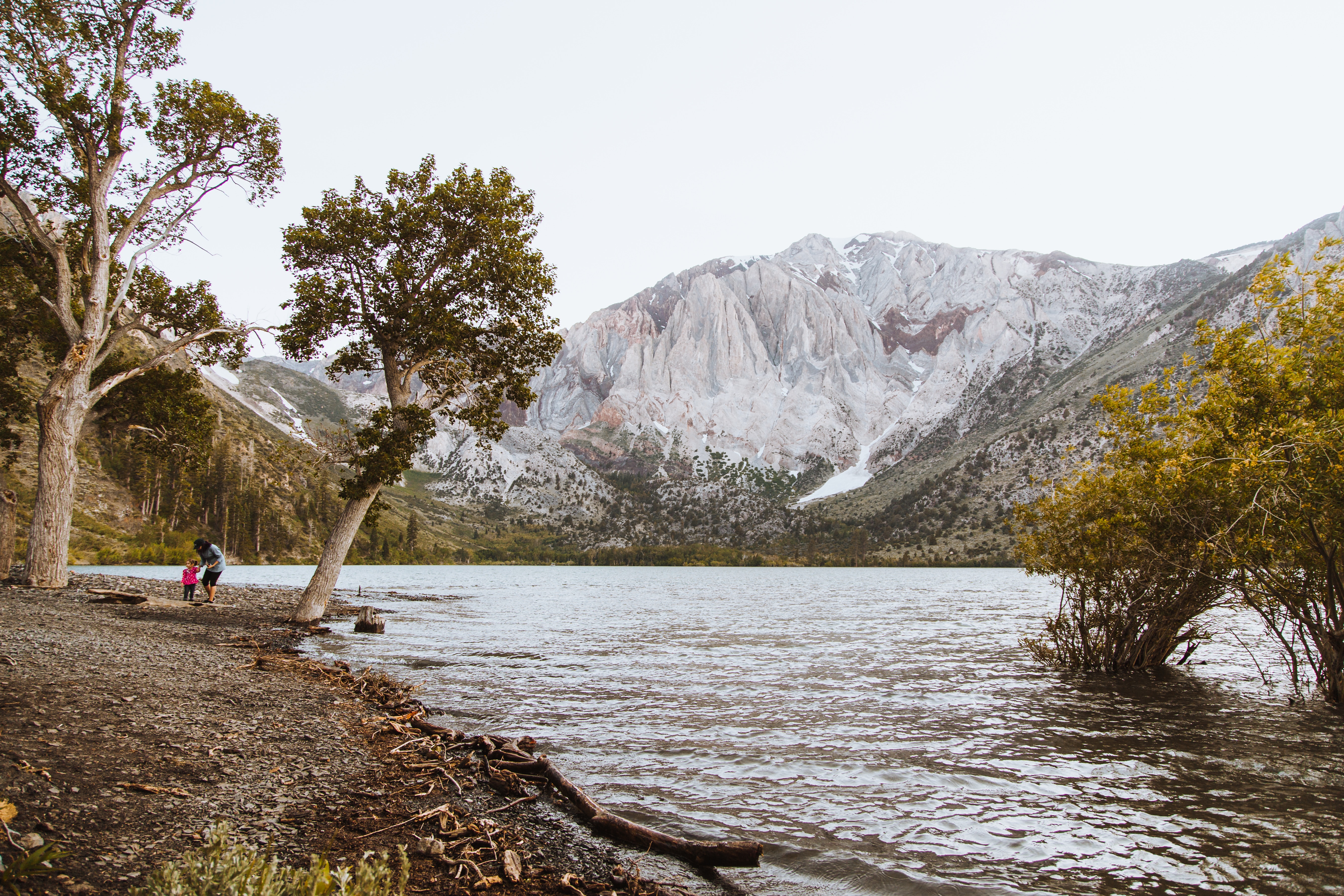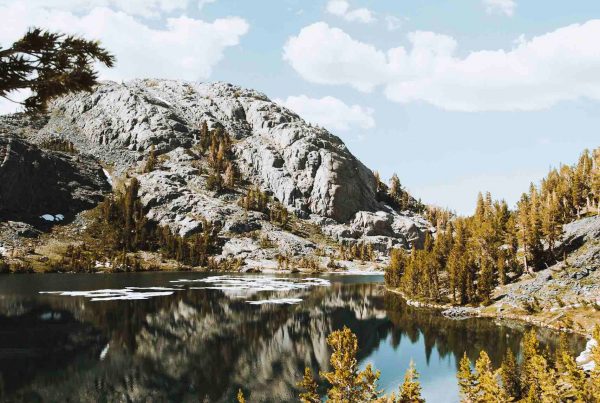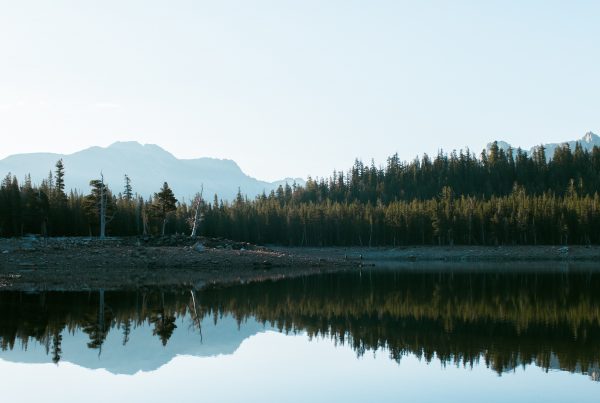Convict Lake is a lake located in Mono County, California, United States, situated in the Sherwin Range of the Sierra Nevada mountains. It is known for its turquoise-blue water, the dramatic mountains (including Mount Morrison) that surround it, for the trout fishing it affords, and for its unusual history.
The lake, known to the Paiute as Wit-sa-nap, was renamed by settlers after an incident on September 23, 1871, wherein a group of convicts escaped from prison in Carson City, Nevada, and took refuge near the lake. They were pursued by a posse and after it caught up to the convicts a shootout followed, where both posse members and convicts were killed or wounded. The remaining convicts were captured and were eventually lynched.
Convict Lake was originally carved out by glaciers. The lake’s surface is approximately 7,850 feet (2,390 m) above sea level, with its greatest depths approximately 140 feet (43 m) deep in various places; it is among the deepest lakes in the Sierra Nevada mountains. The lake is oblong in shape and is surrounded by a box canyon set in the mountains, with Mount Morrison to the south-east, it being the tallest mountain in that area, at 12,241 feet (3,731 m) high.
The lake and canyon area is dominated by light colored granite. The sedimentary and metamorphic rocks in this area once overlaid the entire Sierra Nevada range but has now been eroded away, revealing the underlying granite that uplifted the range. During the formation of the Sierra Nevada mountain range, magma rose from great depths and obliterated much of the sedimentary rock that it came in contact with. Just below the surface, the magma cooled and formed the granite typical of the range. In the process extreme heat and pressure deformed the immediate overlying sedimentary rocks into numerous and striking shapes.
From Wikipedia, Convict Lake.





